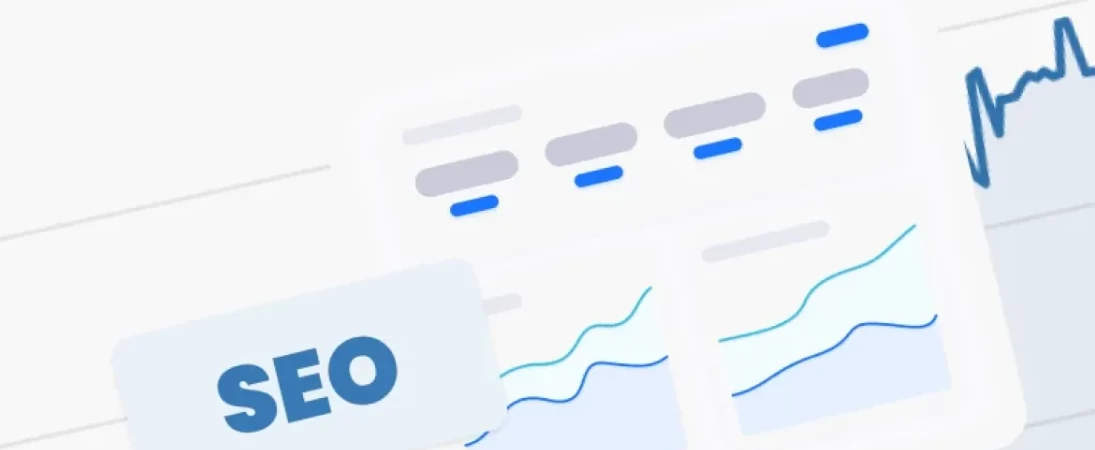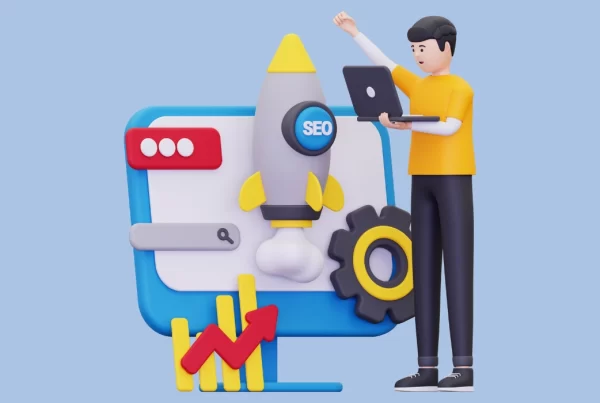Last Updated on 1 year ago by Ecem Ertürk
Getting a blog post to the top of Google may be a wonderful way to boost your brand’s image among your best prospects, but if you want to make the most of your SEO efforts, you must focus on converting those prospects to qualified leads.
Contrary to what you may have heard from the SEO rumor mill, effective B2B SEO is far more about the type of content you’re ranking for your intended keywords and much less about just blasting the search engines with high-authority backlinks. Your website’s information must be actionable and thorough, but it must also be simple to understand! Fortunately, you can use a guide and SEO agency to ensure that search engines generate regular leads and your marketing team gets a good return on the time your company invests in your SEO efforts.
What is B2B SEO?
B2B search engine optimization, often known as B2B SEO, is a digital marketing technique that entails improving your online content to rank higher in Google search results. SEO entails several methods relating to both the content you publish and the technical structure of your website. These strategies are designed to satisfy Google’s ranking algorithms, allowing your site to appear as high as possible in relevant search results.
The idea is for visitors to come across your content when they search for phrases connected to your business, after which they will visit your website and learn more about your brand.
A firm that manufactures tires and then sells them to an automotive manufacturer is an example of B2B. That being said, B2B SEO is the technique of optimizing a company’s website and online content to increase organic traffic and sales conversions. B2B SEO is a dependable method of:
- Create an audience.
- Increase brand presence.
- Create a consistent flow of consumers.
B2B SEO focuses on enhancing a company’s SERP rating to reach the widest potential audience by employing top keywords that people are searching for.
Search engines like Google are dedicated to assisting people in navigating the Internet by displaying the stuff that they want to view the most. Businesses like yours can assist search engines in indexing your website’s information and presenting it to clients who are most likely to require your products or services by executing a B2B SEO plan.
B2B SEO vs. B2C SEO

B2B SEO and B2C SEO are practically the same things. B2B SEO focuses on optimizing content for other businesses that may buy the initial company’s products or services. Many manufacturers are typical instances of B2B trade, whether it’s a company that manufactures and sells auto components to a car company or a company like Xerox that offers companies paper and printing services.
B2C SEO, on the other hand, is intended to optimize companies’ websites and online content to attract general public customers. While thorough descriptions and demos are acceptable in B2B commerce, they are often less technical and detailed in B2C commerce. Instead, it focuses on catching the attention of a target audience and guiding prospects through the conversion funnel.
The process of selling products or services to other businesses is known as B2B (business-to-business). Business-to-business transactions are more comprehensive, and the sales process is lengthier. More effort must be expended to convert a prospect into a lead and then into a paying client.
The technique of selling products and services directly to customers is known as B2C (business-to-consumer). A B2C transaction consists of a consumer finding your website, adding a product or service to a basket, and paying for the goods or services online.
The 6-Step B2B SEO Strategy

Now that we’ve discussed the numerous benefits of a B2B SEO strategy, it’s time to talk about how to construct your own. While the specifics of each B2B SEO strategy may vary depending on the company’s audience, goods or services, and goals, six common steps apply to developing a B2B SEO plan that attracts clients and promotes overall growth. Each of these processes is described in further detail below.
Step #1: Create Buyer Personas
The importance of building comprehensive buyer personas in B2B SEO cannot be overstated. It should also be the first step to devising a successful plan. After all, the more you know about your target audience and their needs, the more effectively you can target them. Most firms will have many buyer personas. It’s vital to understand who these folks are, what their issues are, where they hang out online, and so on. The more information you have, the better. This does not involve choosing a one-size-fits-all approach, which often doesn’t work in B2B. Conversely, it can help you break your strategy down into specific phases that target each one efficiently.
Creating B2B audience personas is often more difficult than creating B2C personas.
People interested in working out or wearing casual attire, for example, would be the traditional B2C clientele for a sportswear brand.
B2B organizations, on the other hand, must determine who they need to interact with inside their target industries. This individual might be:
- A manager of inventories.
- A department store purchaser.
- A supervisor.
- A chief financial officer.
Determine who you need to target to make a sale and build a persona around them.
Step #2: Understand Your Sales Funnel
First of all, you should not determine the keywords your buyers use and what you should rank for. Instead, you need to understand how your company’s sales funnel works.
The boundaries between sales and marketing may be unclear for some time. However, understanding how to examine your funnel may seem unfamiliar to you. So, where do you begin?
- Spend time conversing with your sales crew. Inquire about the funnel, how they feel it works, the most effective touchpoints, and other details.
- Examine your sales and analytics data to see how customers are finding your company.
- Write down critical statistics such as a customer’s lifetime value, average customer retention, average purchase time, and why customers leave.
-
The Seed Keywords Engine
The Seed Keywords Engine is a simple application that allows you to create a search scenario and then ask your friends to respond to it as if they were using a search engine. To put it to use, design a scenario for someone to look for. Essentially, you’re asking someone to look for what you’re selling.
-
Google Autosuggest
Autosuggest is a Google search function that helps you complete queries that you’re starting to enter. The Autosuggest function is driven by RankBrain, a crucial component of Google’s machine learning search algorithm that leverages deep learning to provide better results to consumers.
-
Competitor Keyword Analysis
In this step, you’ll utilize an SEO tool to compile a list of terms that a competitor site already ranks for in the SERPs. This method has the benefit of being fast. The Competitor Keyword Analysis tool simplifies the process of determining which keywords your competitors rank for to develop content that outperforms them in search results.
Step #3: Find the Top of the Funnel Topics
The next step is to identify a list of top-of-the-funnel keywords and themes. These are the keywords around which you will eventually develop blog content. One of the most critical parts of a good SEO plan is keyword research. Finding the proper keywords is critical whether you’re a start-up with a fresh new website, rebuilding an old website, or just wanting to update your content. For a B2B SEO plan, your chosen keywords must match specific requirements to be worth targeting.
Step #4: Optimize Product or Service Landing Pages
It’s now time to SEO-optimize your product and service pages. You want to optimize each page specifically around one of the bottoms of the funnel keywords you discovered in Step #2.
Don’t lose sight of your primary objectives and key performance indicators (KPIs). While achieving rankings and developing content to attract attention from prospects at every level of the sales funnel is important, your ultimate aim is to drive a sale.
This includes making certain that you’ve created effective sales pages or service landing pages. Sales landing pages are frequently used as the pillar sites for B2B organizations. You may create cluster content around these to add depth, gain traffic across the funnel, and answer your prospects’ inquiries.
-
100% Unique Content
Unique content is online content that is designed to be unlike any other stuff on the internet. Creating this type of content is critical since it can improve search engine optimization. Determine what your target audience truly wants to know, and then create content around those themes.
Don’t overlook the SEO fundamentals when writing high-quality content. Use relevant keywords numerous times — but don’t keyword stuff.
Internally link fresh content so that visitors to your website are more likely to find your blogs, articles, and posts elsewhere.
Businesses must create extensive, well-researched, and up-to-date content. Plagiarizing another source’s content or piggybacking on others’ ideas will not get you very far in B2B SEO. Being a ‘thinking leader,’ on the other hand, will demonstrate to your audience that you have the initiative and inventiveness required to outperform the competition.
-
Long-Form Content
Long-form content is defined as writing that is between 1,000 and 7,500 words long. You may wish to read long-form articles to get a deep dive into complex themes from a reliable source of writing.
The goal of long-form content is to supply the reader with useful information. You can enhance the time spent on your site and the value to your reader by writing long-form pieces — and making sure those articles are beneficial to your audience. Furthermore, by optimizing your website for search engines and including calls-to-action in the body of your content, you may increase lead creation. Your articles will have a better chance of appearing on the first page of SERPs, and you will be able to direct viewers to offers that are relevant to the theme of your work.
-
Smart Keyword Usage
Your target term should appear multiple times on your landing page. But is not recommended to populate your term 100 times on your page. This has the potential to do more harm than good. Instead, you should use your keywords carefully.
- Include your keyword in your page’s H1 title and title tag.
- Make sure your target term is included in your page’s URL.
- Use synonyms and derivatives of your primary keyword.
- Create a unique meta description to increase your click-through rate.
- Try to place your keyword near the top of the page (within the first 50 words)
If you stick to these easy best practices, you’ll be ahead of most B2B SEO practitioners.
Step #5: Build A Scalable Content Strategy
Sales landing pages are often found at the bottom of a B2B sales funnel, at the action stage.
As a result, B2B SEO must have a scalable content strategy that increases exposure above the funnel. In most circumstances, your blog or content hub will be involved in this content strategy.
You must populate your subject clusters with rank-ready content that answers your prospects’ inquiries, puts you on their radar, and introduces them to your company.
Don’t concentrate your efforts too far down the funnel; else, you’ll discover that your competitors are raising awareness far sooner than you are. B2B SEO is about recognizing that B2B sales are frequently about the long term, and a persona seeking “what is [subject]” now may be your new customer in a year.
To that end, B2B content marketing entails a plethora of various content forms and techniques to get you in front of your target audience, such as:
- Blog entries
- Studies on research
- eBooks and white papers
- Videos
- Webinars
- Exemplifications
- Checklists and templates
- Tools
- Newsletters
It’s all about developing a scalable content strategy that sees you create content not only to rank but also to gain links, build engagement, and move organic traffic further down your funnel.
-
Shoulder Topics
Many B2B companies post blog entries directly related to their products. And this is a big mistake. Shoulder Topics are those that are relevant to your company. However, they are not immediately related to your real goods.
-
Ultimate Guides
What transforms a big blog article into an ultimate guide? There are a few elements that practically every comprehensive handbook has in common:
- It delves deeply into a rather large subject.
- It is divided into chapters that examine the subject from many perspectives.
- It is written by an industry expert or researcher.
Aside from that, it is entirely up to you what you include in your ultimate guide and how you design it.
-
“Business Casual” Writing Style
The official post is more formal and full of facts and statistics. Formal writing is generally considered more professional. Instead, it’s better to write in the “Business Casual” style. This method is professional but approachable.
Step #6: Build Backlinks For Your B2B Website
Obtaining backlinks is yet another excellent technique for developing a B2B SEO strategy. They demonstrate to your audience that you are a trustworthy source of information and that you provide high-quality items or services worthy of a referral.
Backlinks from credible sites might therefore propel your company’s B2B SEO to new heights. That being said, how can you obtain backlinks from authoritative and news websites?
The simplest solution is to develop content that is worth connecting to.
If you create highly useful, in-depth content, you are more likely to obtain beneficial backlinks that will increase your SERP ranking.
You may also strive to create alliances with credible sources by incorporating links to their websites in your content. Once you’ve developed a piece of content, you must devote time and effort to promoting it, and this does not only imply encouraging social shares.
To rank, your content must be linked to other websites, and part of your distribution plan should include email marketing to urge others to do so. It might be:
- Having it mentioned as a recommended resource in an existing piece of content.
- Inviting a journalist to publish a story on your newest research.
- Finding possibilities to acquire connections to your site by using broken link building.
-
Digital PR
Digital PR is a technique for increasing brand exposure through internet channels. It is comparable to conventional PR in many aspects, but it allows you to reach a far larger audience than you would not be able to reach using purely offline means. Digital PR focuses on Internet-based methods like search engine optimization, content marketing, influencer outreach, and social media to have the most impact.
-
Helpful Tools and Calculators
Helpful tools and calculators do not need to be sophisticated to function. You’re okay to go as long as your B2B SEO tool is useful. SEO tools give statistics and warnings regarding your website’s general health and success.
They assist in identifying areas of potential as well as limitations or concerns that may be impeding your ability to rank and acquire awareness in the SERPs. SEO tools each serve a specialized purpose. There are some tools available to assist you with:
- Analytics
- Keyword research
- Links
- Local SEO
- Mobile SEO
- On-page SEO
- Rank checking
- The site’s speed
-
Partner Pages
Do you have any suppliers, manufacturers, or other key partners with whom you do business? If that’s the case, you might be able to get a few connections from their partner pages. By showcasing your current assortment, partner pages efficiently attract new partners and establish industry traction. You can use two sorts of partner pages: one that addresses new partners and one that showcases current partners.
All in all, the most critical aspect of a B2B SEO plan is patience. Even if you have a large budget to spend on knowledge and tools, it will take time to get results. They’ll take much longer if you’re starting from scratch, but SEO is all about the long game. To be more successful in this regard, you can manage the process together with the content marketing agency.












